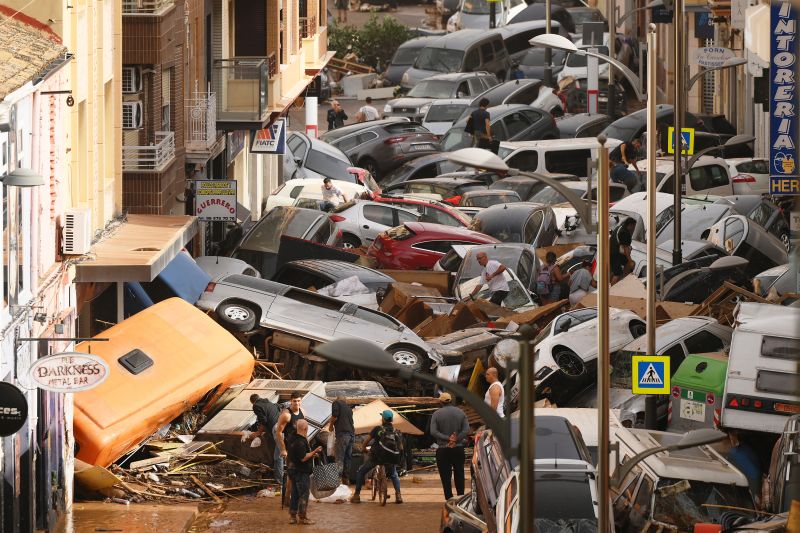Spain Hit by Deadliest Floods in Decades: Here’s What You Need to Know
Background and Overview
Spain has been recently devastated by some of the deadliest floods in decades. The situation has been described as catastrophic, with numerous lives lost, extensive damage to infrastructure, and communities left in disarray. The impact of these floods is far-reaching, affecting both urban and rural areas of the country.
Causes and Contributing Factors
Several factors have contributed to the severity of the flooding in Spain. Heavy rainfall over a prolonged period has caused rivers to overflow their banks, leading to widespread flooding in many regions. Inadequate drainage systems and poor urban planning have also exacerbated the situation, making it difficult for water to be efficiently diverted or managed.
Affected Areas
The floods have affected a large part of Spain, with regions such as Catalonia, Andalusia, and Valencia bearing the brunt of the devastation. In some areas, entire towns have been submerged under water, forcing residents to flee their homes and seek shelter in temporary evacuation centers. The scale of the destruction is immense, and recovery efforts will require significant resources and time.
Human Toll
Tragically, the floods have resulted in a significant loss of life, with many people reported missing or confirmed dead. The human toll of this natural disaster is immense, leaving families and communities grieving for their loved ones. The emotional and psychological impact of such events can be long-lasting, requiring support and assistance for those affected.
Infrastructure Damage
In addition to the loss of life, the floods have caused extensive damage to infrastructure, including roads, bridges, buildings, and utilities. The destruction of critical infrastructure has further hampered rescue and relief efforts, making it challenging for emergency services to reach affected areas and provide assistance to those in need. The rebuilding and restoration of infrastructure will be a key focus in the recovery phase.
Response and Relief Efforts
In the wake of the floods, the Spanish government, along with local authorities and international aid organizations, has mobilized resources to provide emergency assistance to affected communities. Rescue teams have been deployed to search for survivors, while shelters have been set up to accommodate those displaced by the disaster. The response efforts are ongoing, with a focus on ensuring that those affected receive the support they need to recover and rebuild their lives.
Long-Term Recovery and Preparedness
As Spain grapples with the aftermath of the deadliest floods in decades, there is a growing recognition of the need to invest in long-term recovery and preparedness measures. This includes implementing better flood prevention strategies, improving infrastructure resilience, and enhancing early warning systems to mitigate the impact of future disasters. By learning from the lessons of this catastrophic event, Spain can better prepare itself for similar challenges in the future.
Conclusion
The deadliest floods in decades have left Spain reeling, with widespread devastation and loss. The road to recovery will be long and challenging, requiring a coordinated effort from the government, aid agencies, and affected communities. While the immediate focus is on providing relief to those in need, there is also a crucial need to invest in long-term recovery and preparedness measures to build resilience against such natural disasters. As Spain begins the process of healing and rebuilding, the lessons learned from this tragedy will be invaluable in shaping a more resilient and prepared future.

